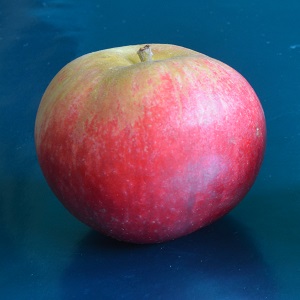Settled and Sumptuous: Many summer fruits are in their prime and are nicely settled for a while before we see the late Summer / early Autumn changes. From the UK, there are fabulous cherries, early signs of plums and a continued abundance of delicious berries. We even have a high-quality apple, Kentish Kiss (aka Magic Star), stored from September, to rival Envy and Smitten, the new varieties from New Zealand.
For the best advice on flavour, don’t forget to download the Good Fruit Guide app (it’s free), either from Apple App Store or Google Play Store!
FOR MY FRUITBOWL, I WOULD BUY:
- Cherries: Exceptional quality from UK
- Berries: all from UK;
- Mangoes: Chaunsa from Pakistan;
- Melons: Piel de Sapo for reliability;
- Peaches & Nectarines: mid-season from Spain;
- Oranges: South African Navels;
- Apples: Kentish Kiss & Envy.
Cherries: Now is the time to indulge in English cherries: the season is in full swing and quality is wonderful. For the very best, seek out the large, fleshy, shiny fruit such as Kordia, often in big packs of 750-1000g. It’s sensible to buy the large packs as these will all be gone in a flash. The best value for the largest berries is probably Waitrose at £6.43/kg and M&S at £6.66/kg equivalent; for cheaper, smaller berries, Sainsburys have 800g of Spanish Lapins at £5.60/kg and Tesco offer as 1kg tray of British Summer Sun. Otherwise, all stores are selling UK cherries in various packs and various berry sizes, which should all deliver great satisfaction.
The stalkless Picota cherries from the Jerte Valley in Spain also continue as the ‘value’ option: they have quite large stones, but a wonderful flavour (cheapest in Tesco 550g pack at equivalent £3.62/kg, but mostly under £4.00/kg, except in Asda).
Strawberries: Plentiful volumes of strawberries from UK farms fill the supermarkets. Both condition and eating quality can be variable with the humid weather conditions, but, by and large, they are good. Sweet Eve and Driscoll Amesti should be reliably sweet, and these varieties are mostly being used for big punnets (600g to 1kg): best price is 1kg in Morrisons for £3.
Premium and ‘super sweet’ varieties are mainly Sweet Eve, Driscoll Zara and Driscoll Solera. Asda’s Scotty Brand pack (no variety mentioned) has had good reviews on their website.
Blueberries: As with strawberries, there are lots of good quality and good value blueberries on sale. Duke is the predominant variety, now from Poland and Ukraine as well as UK, Italy and Romania. The main premium variety seems to be Driscoll Sweet Jane, seen in M&S and Waitrose from UK.
Raspberries: These wonderful fruit continue from UK growers with retailers mostly selling the newer varieties such as Berry Jewel, Berryworld Gem and Driscoll Maravilla.
Blackberries: UK-grown Driscoll Victoria, a sweet variety with lower acids, is now so common that it is often sold at the same price as older, more tangy varieties (as in Morrisons).
Gooseberries: Larger mainstream stores continue with Invicta for culinary purposes: full of flavour. Red dessert gooseberry, Xenia, is in M&S and Waitrose.
Mangoes: The incredibly sweet Pakistani Chaunsa mangoes are on sale in South Asian grocery stores by the box: don’t be put-off by the rather dull appearance and presence of slight wrinkling. These are normally also sold in Tesco, Morrisons and Asda, but so far I’ve only seen Pakistani variety Doshera in Asda (£5/box).
The arrival of Gambian Maya is a sign of change in the dominance of West Africa/Caribbean sources of Kent and Keitt as the standard supermarket fare. This is a good variety with lovely silky flesh, though perhaps not the prettiest: look out for the Israeli season shortly.
Melons: Of standard melon varieties, Piel de Sapo is usually the most reliable, though more expensive than Galia, Canteloupe and Honeydew. For variation, try newer varieties such as Matice (aka Sweet Snowball), Sunkiss, Orange Candy and Gwanipa (aka Sweet Tangy Twist), variously in Tesco, M&S and Waitrose.
Peaches & Nectarines: Production is moving up to Northern Spain and France, so we should see a continuation of good mid-season varieties, though perhaps mixed with some firm late varieties from Southern Spain. Expect some lovely fruit, particularly in ripe and ready packs (which often need further softening at room temperature).
For snacks and hungry mouths in school holidays, stock-up on flat peaches: so sweet and easy to eat (and cheap everywhere, except MS and Waitrose).
Oranges: South African Navels are widely available and are fresh and flavoursome (M&S have Cara Cara, an excellent orange with slight pigmentation). Spanish Valencia Lates, or variants such as Midknight and Delta, are great for juicing and have good flavour, though are not as fine as Navels.
Apples: Worth trying are three new/newish varieties which standout from the standard range of apples: Tesco has excellent English-grown Kentish Kiss (aka Magic Star) from last harvest; M&S and Waitrose have New Zealand Envy; and Morrisons have Smitten, also from New Zealand.
Persimmons: Triumph persimmons from South Africa are delicious, particularly when soft and jelly-like, and should be easily available.
Satsumas: Peruvian Owari is still wonderful to eat, particularly if you avoid the ‘value’ options.
Mandarins: South African Clemenules is a good variety, fragrant and sweet, but cheaper packs can be disappointing. South African Nova (usually sold as a tangerine, but in Asda currently in the same packaging as Clemenules) is also a wonderful fruit. Watch-out for the new season Nadorcott from South Africa, just starting in M&S. Morrisons are selling an interesting mandarin called Leanri: large, easy-peeling and sweet.
Grapefruit: Eating quality of grapefruit is excellent at the moment. The red Star Ruby from Swaziland and South Africa is beautifully sweet, while White Marsh Seedless and pink Ruby Red (consistently in larger Waitrose stores), is rich and flavoursome. M&S are selling Jackson (aka Sweet Sunrise) which looks like Marsh, but has a lemony-pineapple flavour and lower levels of bitterness.
Avocados: Hass avocados are primarily from Peru, Columbia and Southern Africa with quality being very good.
Apricots: Standard Spanish apricots are cheap and will taste as good as, if not better, than new red alternatives. The trouble, as always with apricots, is that eating quality is so variable: perhaps the new season UK apricots will be more consistent?
Plums: Spain and Portugal are now producing copious amounts of plums of a number of different varieties. Eating quality depends as much on correct maturity at harvest as anything, but good softening in the fruit bowl at home will help tremendously.
The UK season is just starting with early varieties: M&S has Juna, which, being a European plum, will be very different from the Iberian fruit.
Grapes: The mainland European grape seasons are now underway and will gradually take over from Egypt in the next week or two. Many varieties have a ‘new season’ taste, so don’t immediately ask for a repeat-purchase. However, for guaranteed sweetness try the red grapes, Ralli or Flame Seedless (both widely available), and for combined texture and flavour, both Egyptian and Spanish Sable (M&S, Tesco, Waitrose) is eating pretty well.
Pears: M&S and Waitrose continue to have the best choice of pears with Forelle, Taylor’s Gold and Green Williams. Waitrose, Lidl, Morrisons and Asda have South African or Chilean Abaté Fétèl. Otherwise, the choice is European Conference or South African Packham’s Triumph.
Kiwis: Green Hayward kiwis are from New Zealand and Chile, with the former being more consistent in eating quality. Jintao from Chile or Sungold from New Zealand also feature as the sweeter yellow kiwi option (the former is in Asda).
©Good Fruit Guide 2019. Recommendations on fruit varieties and types with the very best taste are personal to the editor of Good Fruit Guide, and do not attempt to be exhaustive or supported by verifiable consumer research. The highlighting of fruit with the very best taste in the opinion of the editor is not intended as a judgement on the taste of varieties and types of fruit not mentioned.

